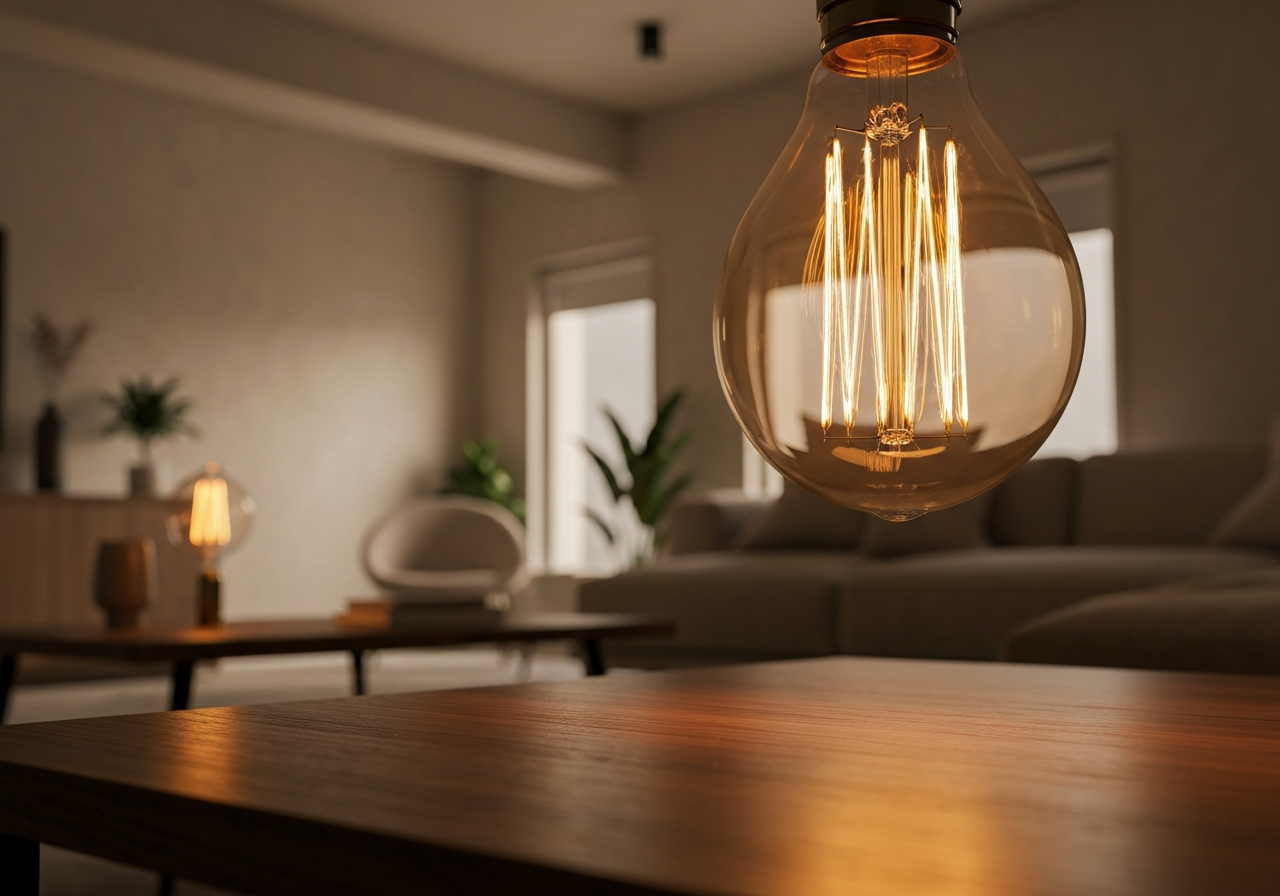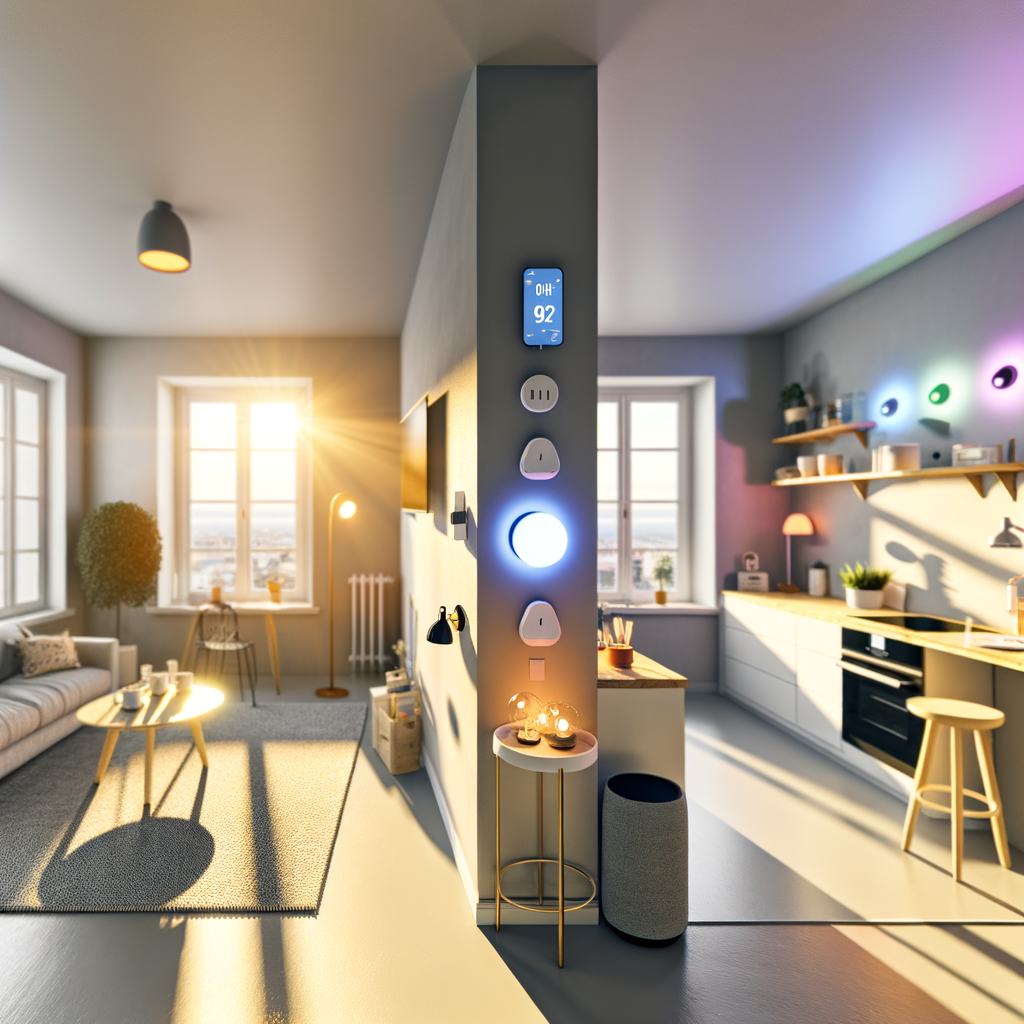Living in a rented space often means getting creative with your eco-friendly habits. While you can’t install solar panels on the roof or upgrade the building’s insulation, there’s one incredibly simple, high-impact change you can make today that will lower your energy bill, reduce your carbon footprint, and even make your apartment more comfortable: changing your light bulbs. If you’ve ever felt like your small apartment turns into a sauna in the summer, or noticed a wave of heat when you stand under a reading lamp, you’re not imagining things. Old-school light bulbs are essentially tiny, inefficient space heaters that also happen to produce light. But fear not! The world of lighting has evolved, and the solution is brighter, cooler, and more affordable than ever. In this ultimate renter’s guide, we’re going to dive deep into the world of energy-efficient lighting, focusing specifically on bulbs that produce significantly less heat. We’ll demystify the jargon on the packaging, help you choose the perfect bulb for every room, and show you how this one small swap can make a massive difference to your comfort and your wallet. The “Hot” Problem: Why Your Old Light Bulbs Are Making Your Apartment Miserable Before we jump to the solution, let’s understand the problem. The villain in this story is the traditional incandescent light bulb—the kind with the glowing wire (filament) inside that many of us grew up with. They are masters of inefficiency. Think of it this way: an incandescent bulb converts only about 10% of the electricity it uses into visible light. The other 90% is wasted and radiated away as heat. That’s right. For every dollar you spend lighting your room with an old bulb, 90 cents is going towards heating it. Halogen bulbs, a slightly more efficient cousin of incandescents, are a little better but still waste around 80% of their energy as heat. For a renter, especially one in a smaller apartment, this creates a frustrating cycle: Increased Ambient Temperature: Multiple hot bulbs running in a small, enclosed space can noticeably raise the room’s temperature. That cozy reading nook suddenly becomes a sweat lodge. Higher Cooling Costs: Your air conditioner or fan has to work harder to combat the extra heat being generated by your lights, leading to a higher electricity bill in the warmer months. Safety Concerns: These bulbs can get dangerously hot to the touch, posing a risk to curious pets, children, or delicate lampshades and fabrics placed too close. It’s a classic case of paying for something you don’t even want. But the good news is, the hero of our story is readily available and easy to deploy. The Cool Solution: Why LED Bulbs Are a Renter’s Best Friend The undisputed champion of modern, energy-efficient, and low-heat lighting is the LED (Light-Emitting Diode) bulb. You’ve likely heard of them, but let’s break down exactly why they are the perfect choice for any eco-conscious renter. Unlike incandescent bulbs that heat a filament until it glows, LEDs create light through the movement of electrons in a semiconductor material. This process is vastly more efficient and produces very little heat as a byproduct. While an LED bulb can still feel warm at its base (where the electronics are housed), the light-emitting part remains cool. This fundamental difference leads to a cascade of benefits. Benefit #1: Dramatically Less Heat This is the main event. An LED bulb converts about 90% of its energy into light and wastes only about 10% as heat. It’s a complete reversal of the incandescent model. By switching to LEDs, you are actively removing mini heat sources from your home, leading to a more comfortable living space and less strain on your cooling systems. Benefit #2: Massive Energy Savings Because they are so efficient, LEDs use a fraction of the electricity. A typical LED bulb uses 75-80% less energy than an equivalent incandescent bulb. Let’s put that in real terms: replacing a single 60-watt incandescent bulb with a 10-watt LED (which produces the same amount of light) that you use for 5 hours a day can save you over $10 per year on your electricity bill. Now multiply that by all the bulbs in your apartment! It’s one of the fastest and easiest ways to lower your monthly expenses. Benefit #3: Incredible Lifespan Tired of bulbs burning out at the most inconvenient times? A quality LED bulb can last for 15,000 to 25,000 hours or more. An old incandescent bulb typically lasts for only about 1,000 to 1,200 hours. This means one LED can outlive 15-20 incandescent bulbs. For a renter, this is fantastic. You’ll save money on replacements, create less waste, and might even be able to take your high-quality bulbs with you when you move. A Quick Note on CFLs You might also see Compact Fluorescent Lamps (CFLs) on the shelf. While they were a good stepping stone from incandescents, they have several renter-unfriendly drawbacks. They contain a small amount of mercury (making disposal tricky), they often take time to warm up to full brightness, and their light quality can be harsh. With LEDs now being so affordable and superior in every way, we strongly recommend skipping CFLs and going straight to LED. Decoding the Box: How to Choose the Perfect Low-Heat LED Bulb Okay, you’re sold on LEDs. But when you get to the store, the aisle is filled with boxes covered in terms like “lumens,” “kelvin,” and “CRI.” It can be intimidating! Let’s break it down into simple, practical terms so you can shop with confidence. Forget Watts, Think Lumens (Brightness) This is the most important shift. We used to associate brightness with watts, but watts measure energy use, not light output. Lumens (lm) are the true measure of brightness. Since LEDs are so efficient, they produce a lot of light with very few watts. Use this handy chart to find the right replacement: To replace a 100-watt incandescent, look for an LED with about 1600 lumens (uses 16-20 watts). To replace a 75-watt incandescent, look for an LED with about 1100 lumens (uses 11-13 watts). To replace a 60-watt incandescent, look for an LED with about 800 lumens (uses 8-10 watts). To replace a 40-watt incandescent, look for an LED with about 450 lumens (uses 4-6 watts). Find Your Vibe with Color Temperature (Kelvin) Ever notice how some light feels warm and cozy, while other light feels cool and clinical? That’s color temperature, and it’s measured in Kelvin (K). This is crucial for setting the right mood in your rented space. Warm White (2700K – 3000K): This is the cozy, yellowish-white light we associate with traditional bulbs. It’s perfect for living rooms, bedrooms, and dens—anywhere you want to relax and feel comfortable. Cool White / Bright White (3500K – 4100K): A more neutral, white light that’s great for creating a clean, alert atmosphere. Use these in kitchens, bathrooms, and home offices where you need to see clearly for tasks. Daylight (5000K+): An intense, bluish-white light that mimics natural daylight. It’s excellent for task lighting, workshops, or for people who need very bright light for reading or hobbies. It can feel a bit sterile for general living areas. Pro-Tip: For the ultimate flexibility, look for “tunable white” smart bulbs, which allow you to change the Kelvin temperature with an app on your phone! See True Colors with CRI (Color Rendering Index) The CRI is a scale from 0 to 100 that measures how accurately a light source reveals the true colors of objects. The sun has a CRI of 100. Old incandescent bulbs were pretty good, with a CRI over 95. Cheap, low-quality LEDs can have a low CRI, which can make your food, clothes, and even your skin tone look dull and “off.” For a home environment, always look for a bulb with a CRI of 90 or higher. It will be listed on the “Lighting Facts” label on the box. This ensures that the colors in your apartment look vibrant and natural. Match the Shape and Base Finally, make sure you get the right physical bulb! Unscrew one of your old bulbs to check its shape and base before you go shopping. The most common ones you’ll find are: A19: The classic, pear-shaped bulb for standard lamps and fixtures. Candelabra (E12): The small, flame-shaped bulbs for chandeliers and some decorative lamps. GU10 or MR16: The small, spotlight-style bulbs often found in track lighting or recessed fixtures in newer apartments. Our Top LED Bulb Picks for Renters (That Won’t Overheat Your Space) While specific brands are always changing, here are the types of bulbs you should look for to get the best performance for your money and comfort. 1. The All-Around Workhorse: Dimmable A19, 2700K, 90+ CRI This is your go-to bulb for 90% of your apartment. An 800-lumen (60W equivalent) version is perfect for most lamps and overhead fixtures. Make sure to get a “dimmable” version, even if you don’t have a dimmer switch. They are generally higher quality and give you the option to add a smart plug or lamp with a built-in dimmer later. 2. The Kitchen & Bathroom Hero: Bright White A19, 4000K, 90+ CRI For areas where you need to see what you’re doing—like chopping vegetables or applying makeup—a slightly cooler and brighter light is ideal. A 4000K bulb with 1100 or 1600 lumens will make your functional spaces feel clean and bright without being harsh. 3. The Style Upgrade: LED Filament / Edison Bulbs Love the look of vintage Edison bulbs but hate the heat and energy waste? You’re in luck! LED filament bulbs perfectly mimic that classic look with glowing “filaments” inside a clear glass bulb. They produce a beautiful, warm light (usually around 2200K-2700K) and, most importantly, they stay cool to the touch and use very little energy. They’re perfect for any exposed-bulb fixture in your apartment. 4. The Renter-Friendly Smart Bulb Smart bulbs (like Philips Hue, Wyze, or Sengled) are a renter’s dream. They connect to your Wi-Fi and allow you to control brightness, color, and temperature from your phone. This means you can have a dimmer switch in a rental that doesn’t have one! You can set schedules, create different lighting “scenes” for movies or reading, and take them with you when you move. They are the ultimate in customizable, cool-running light. Your Action Plan for a Cooler, Greener Apartment Feeling empowered? Here’s your simple plan: Do a quick audit. Walk through your apartment and count how many incandescent or halogen bulbs you’re still using. Pay special attention to the ones you use most often. Prioritize the high-use bulbs. Start by replacing the bulbs in your living room lamp, your kitchen ceiling fixture, and your bedside table—the ones that are on for hours every day. This is where you’ll see the biggest and fastest impact on your bill and comfort. Choose the right LED. Use our guide above to pick the perfect lumen level and Kelvin temperature for each space. Enjoy the benefits! Notice how much cooler your reading nook is, appreciate the lower number on your next electricity bill, and give yourself a pat on the back for making a smart, simple, and effective eco-friendly change. Switching to energy-efficient, low-heat LED light bulbs is truly one of the most powerful upgrades a renter can make. It requires no landlord permission, no complex installation, and the payback in energy savings and pure comfort begins the moment you screw in that new bulb. Happy lighting!
Stay Cool & Save Money: The Renter’s Guide to the Best Energy-Efficient, Low-Heat Light Bulbs




